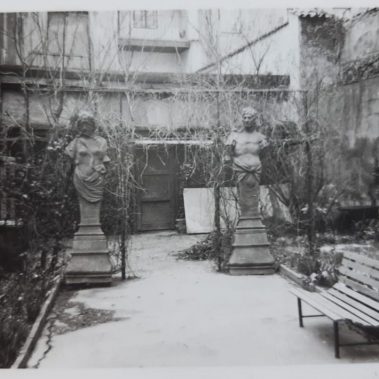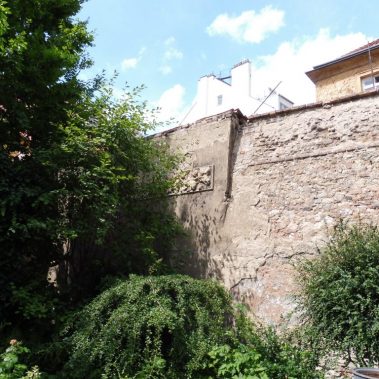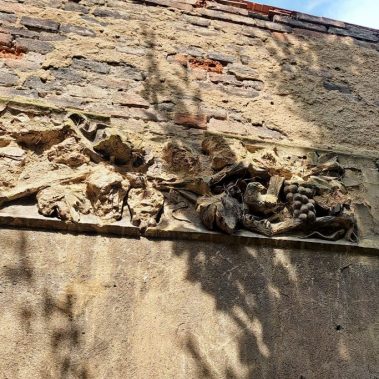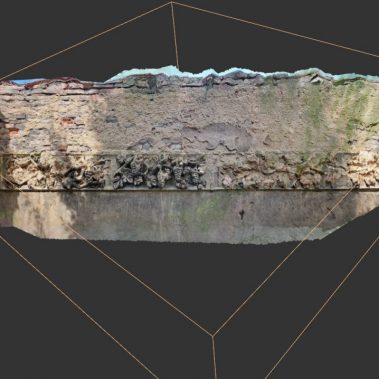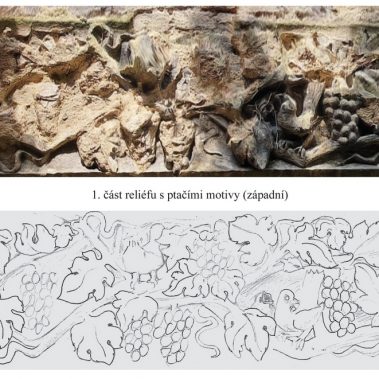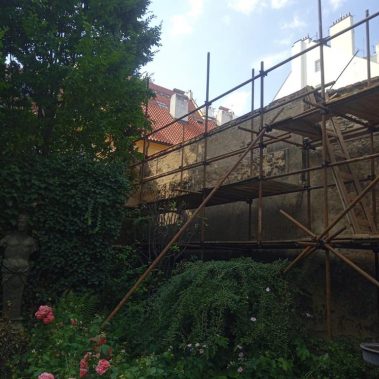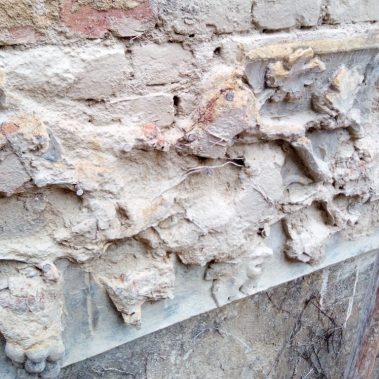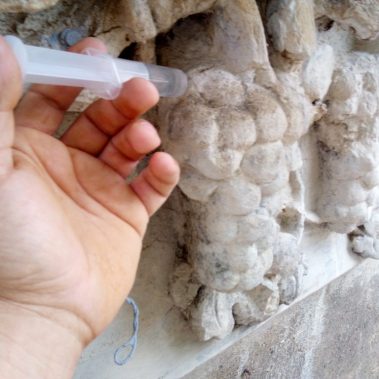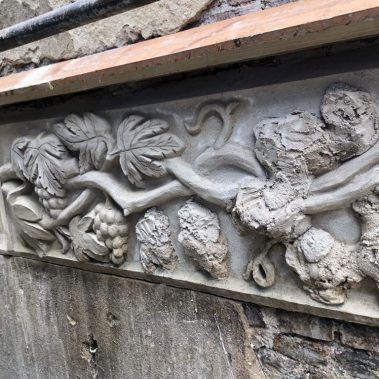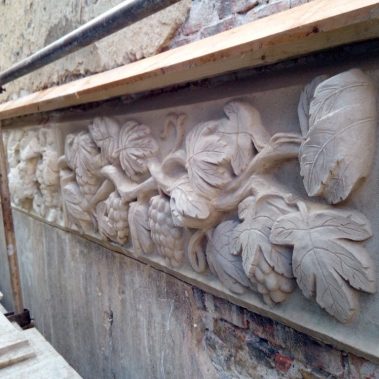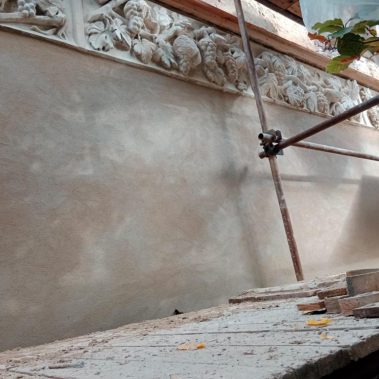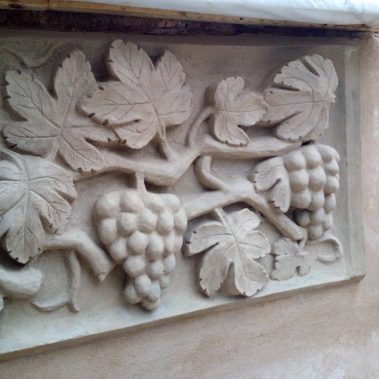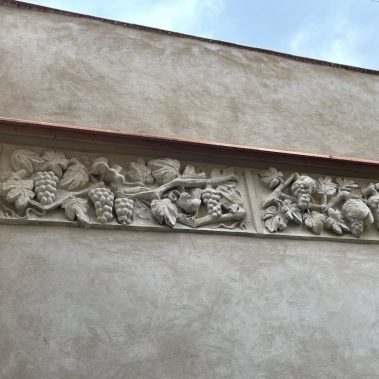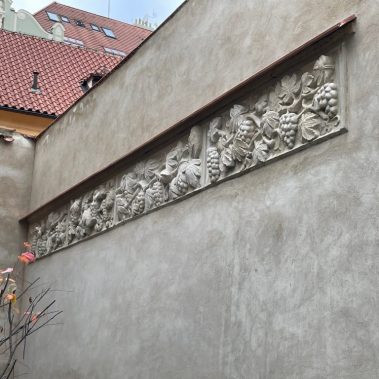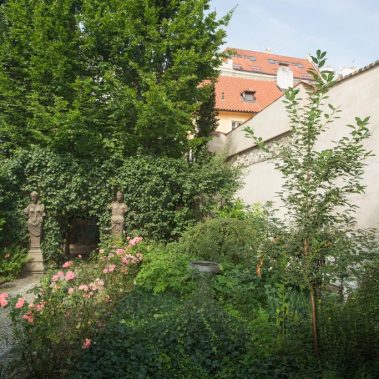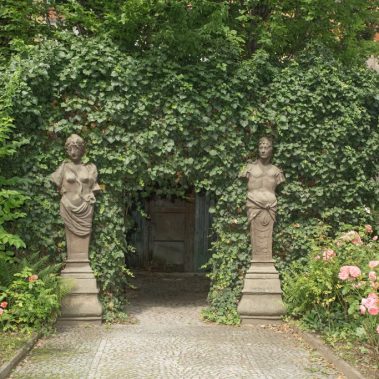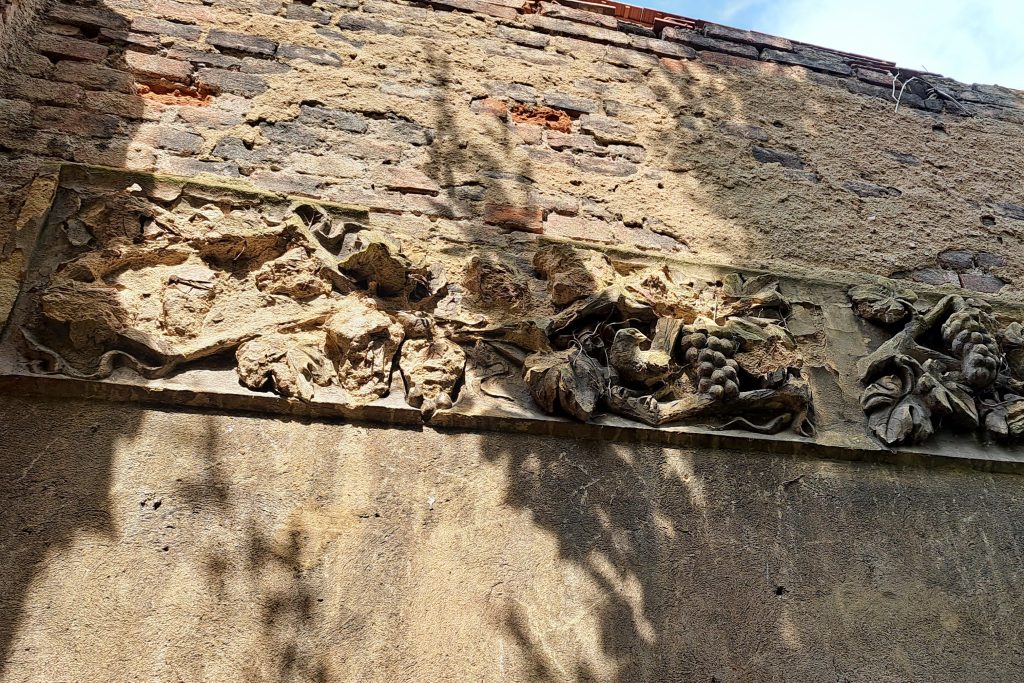
Address:
Old Town, U Obecního dvora 798/5, Prague 1
Client:
Municipal district of Prague 1
Description of the works:
Restoration and construction work
Realization:
2023
The originally Gothic House of the Censors has undergone a number of reconstructions during its existence; first in the 17th century a Renaissance reconstruction, in the 18th century a Baroque and a Classicist reconstruction. The decorative relief on the inner side of the enclosure wall belongs to the adaptations made in the last two centuries. The restoration of the relief was carried out on the basis of a contract for the ‘Restoration of the garden wall of property No. 798’ with the Prague 1 Municipal District.
In order to ensure the state of disrepair of the masonry and the relief, it was necessary to carry out a survey, documentation and securing of the monument. Using photogrammetry, a 3D model was created, which allowed for a pictorial reconstruction of the shape of the heavily damaged or completely missing parts of the decoration. The relief strip is divided into four fields/images with a vine motif.
The sculpture was first removed of all foreign deposits, washed and mechanically cleaned. The preserved elements of the sculpture were deeply strengthened. The sculptural modelling was carried out according to the drawing reconstruction with partial modifications, which were always based on the finding situation according to the shape traces or positions of the remains of the fittings. The application was carried out with pure lime, slightly hydraulic mortar bonded with natural hydraulic lime Otterbein NHL 3,5 filled with washed sands of the necessary granulometry. The final layer, as in the case of the original relief construction, was made with the addition of a natural hydraulic component known as Roman cement.














